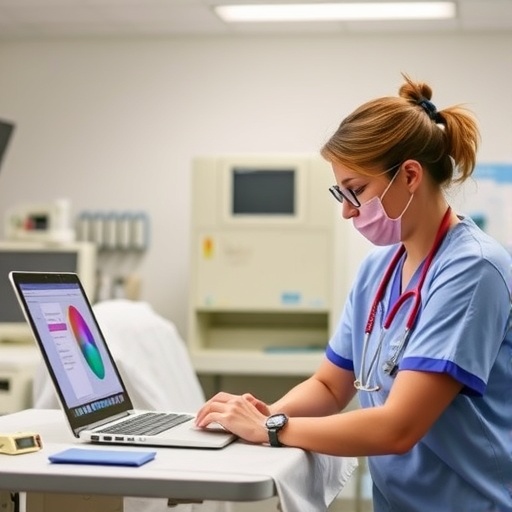Washington, DC – Dec. 16, 2016 – A team of researchers has developed a portable detection system that can rapidly identify some of the most virulent, often multi-drug resistant pathogens. This device was designed to be used in places where laboratory resources are lacking, such as isolated villages in developing countries. The research is published December 16th in Applied and Environmental Microbiology, a journal of the American Society for Microbiology.
Microbial infections afflict approximately1.5 billion people annually, killing roughly 4.6 million, most of that toll in the developing world. The lack of diagnostic facilities in remote locations prevents timely identification of pathogens. That frequently forces caregivers to guess when diagnosing and treating microbial infections. Under these circumstances, treatment is less likely to be effective. For example, when an infection's cause can't be identified with certainty, caregivers frequently use broad spectrum antibiotics to boost the probability of killing the pathogen. Unfortunately, as compared to precisely targeted antibiotics, the use of broad spectrum antibiotics increases the likelihood of spreading antimicrobial resistance genes, said first author Lars D. Renner, PhD, Group Leader at the Leibniz Institute of Polymer Research, and the Max Bergmann Center of Biomaterials, Dresden, Germany.
The new battery powered detection system is small and simple. Sixteen microchambers each contain a genetic sequence from one of the sixteen pathogens the device is designed to detect. When one of these sequences matches a sequence from a patient sample, a fluorescent light illuminates from within the relevant microchamber. Then, an app detects the position of that chamber, and identifies the pathogen according to that position. This very sensitive assay can provide positive identification with patient samples containing as few as 10 DNA sequences.
The investigators picked the sequences the device uses by screening the genomes of the relevant bacteria for unique genetic sequences. Pathogens can be identified using single drops of patient samples from blood, urine, or other bodily fluids, said Renner.
The system can identify Enterococcus faecium, Staphylococcus aureus, Klebsiella pneumoniae, Acinetobacter baumannii, Pseudomonas aeruginosa, and various species of the genus, Enterobacter.
Applications for the technology, besides healthcare, include a variety of areas where it is necessary to identify environmental bacteria–"food security, agriculture, water quality, and industrial processing and manufacturing," said Renner.
###
The research received financing from the Bill and Melinda Gates Foundation, as an effort to bring better healthcare to underserved, remote areas, and to help stem the spread of antimicrobial resistance. The Department of Defense also provided financing, as such diagnostics could help protect soldiers fighting in remote locations, said coauthor Douglas Weibel, PhD, Professor of Biomedical Engineering, University of Wisconsin, Madison. Several of the authors have formed a company to build the device for North American markets, and to provide it at cost in the developing world.
The American Society for Microbiology is the largest single life science society, composed of over 48,000 scientists and health professionals. ASM's mission is to promote and advance the microbial sciences.
ASM advances the microbial sciences through conferences, publications, certifications and educational opportunities. It enhances laboratory capacity around the globe through training and resources. It provides a network for scientists in academia, industry and clinical settings. Additionally, ASM promotes a deeper understanding of the microbial sciences to diverse audiences.
Media Contact
Aleea Khan
[email protected]
202-942-9365
@ASMnewsroom
http://www.asm.org
############
Story Source: Materials provided by Scienmag




